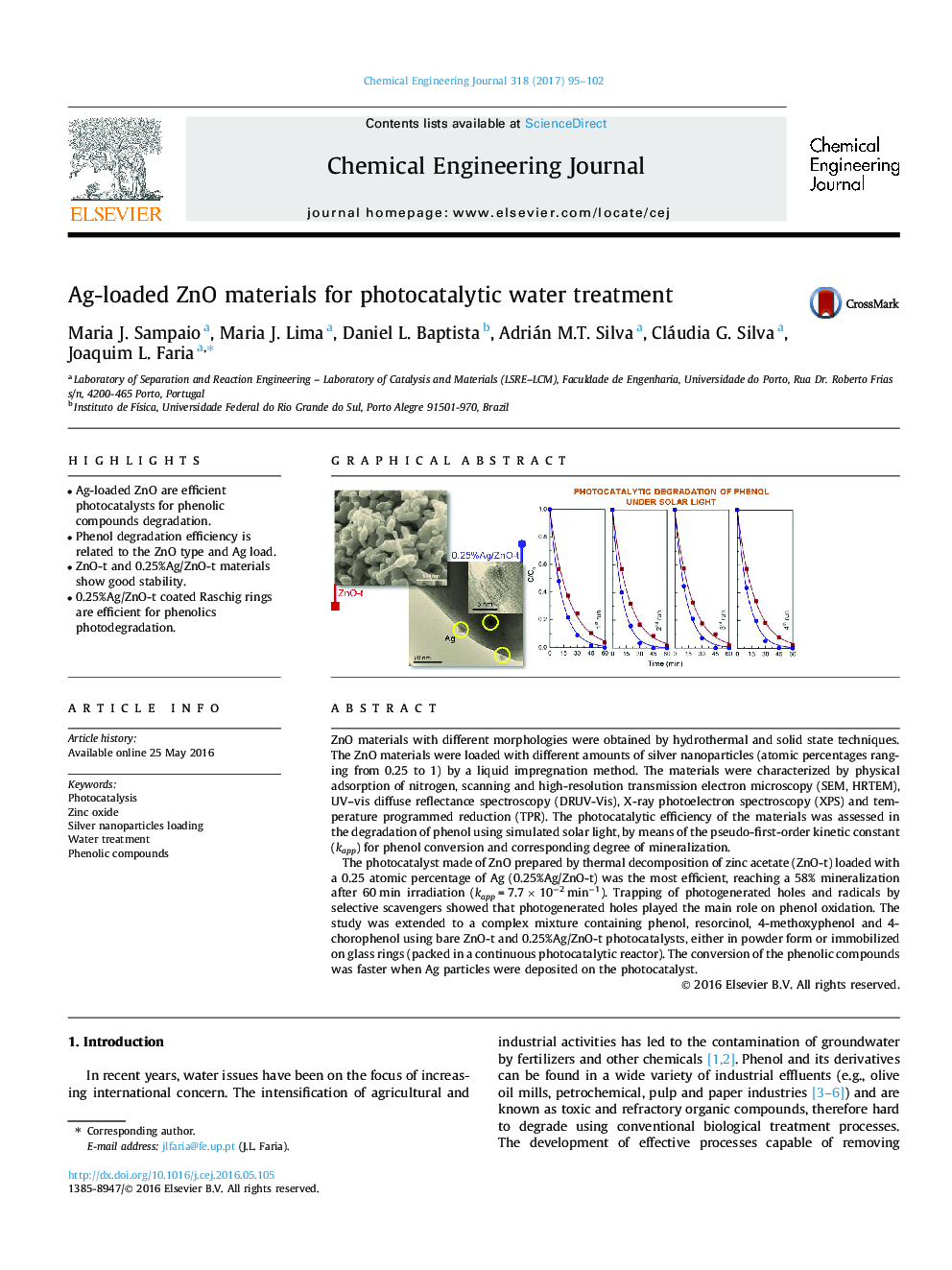| Article ID | Journal | Published Year | Pages | File Type |
|---|---|---|---|---|
| 6466249 | Chemical Engineering Journal | 2017 | 8 Pages |
â¢Ag-loaded ZnO are efficient photocatalysts for phenolic compounds degradation.â¢Phenol degradation efficiency is related to the ZnO type and Ag load.â¢ZnO-t and 0.25%Ag/ZnO-t materials show good stability.â¢0.25%Ag/ZnO-t coated Raschig rings are efficient for phenolics photodegradation.
ZnO materials with different morphologies were obtained by hydrothermal and solid state techniques. The ZnO materials were loaded with different amounts of silver nanoparticles (atomic percentages ranging from 0.25 to 1) by a liquid impregnation method. The materials were characterized by physical adsorption of nitrogen, scanning and high-resolution transmission electron microscopy (SEM, HRTEM), UV-vis diffuse reflectance spectroscopy (DRUV-Vis), X-ray photoelectron spectroscopy (XPS) and temperature programmed reduction (TPR). The photocatalytic efficiency of the materials was assessed in the degradation of phenol using simulated solar light, by means of the pseudo-first-order kinetic constant (kapp) for phenol conversion and corresponding degree of mineralization.The photocatalyst made of ZnO prepared by thermal decomposition of zinc acetate (ZnO-t) loaded with a 0.25 atomic percentage of Ag (0.25%Ag/ZnO-t) was the most efficient, reaching a 58% mineralization after 60 min irradiation (kapp = 7.7 Ã 10â2 minâ1). Trapping of photogenerated holes and radicals by selective scavengers showed that photogenerated holes played the main role on phenol oxidation. The study was extended to a complex mixture containing phenol, resorcinol, 4-methoxyphenol and 4-chorophenol using bare ZnO-t and 0.25%Ag/ZnO-t photocatalysts, either in powder form or immobilized on glass rings (packed in a continuous photocatalytic reactor). The conversion of the phenolic compounds was faster when Ag particles were deposited on the photocatalyst.
Graphical abstractDownload high-res image (117KB)Download full-size image
